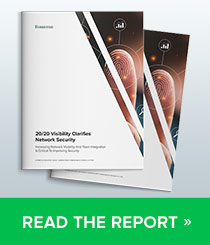Introduction
In its recent Advisory AA25‑203A, the Cybersecurity and Infrastructure Security Agency (CISA) reaffirms a powerful truth: Protective DNS (Domain Name System) remains one of the most effective defenses against ransomware.
This is not speculation—it is guidance grounded in proven reality. What makes Protective DNS especially compelling is that it builds on your existing infrastructure and is already recognized in the National Institute of Standards and Technology (NIST) Special Publication (SP) 800‑81 as a security best practice.
Why DNS Matters against Ransomware
Ransomware impacts start with malicious traffic—whether it is phishing emails, command-and-control (C2) connections or data exfiltration channels. DNS sits at the heart of this traffic flow: it translates domain names into IPs, but also reveals where traffic is headed.
CISA’s AA25‑203A highlights that DNS offers the earliest interception point for ransomware—blocking before a connection is even established. By filtering DNS queries before they resolve to malicious infrastructure—be it known C2 domains, phishing sites or exfil servers—organizations can stop threats before they initiate payload delivery.
CISA’s Advisory AA25‑203A: DNS Takes Center Stage
In AA25‑203A, CISA reaffirms its ongoing Stop Ransomware campaign and emphasizes core mitigations:
- Filtering network traffic to prevent access to suspicious or malicious domains
- Monitoring DNS resolution habits to detect anomalous or high-risk queries
This transforms DNS from a passive service into a dynamic defense control—stalling only the malicious activity without disrupting legitimate network operations.
DNS = Existing Infrastructure with Massive ROI
Most organizations already use DNS. There is no need for new hardware—just smarter deployment. You are enhancing a core service by:
- Implementing filtering or sinkholing DNS requests to known malicious domains
- Aggregating query logs for visibility, incident response and threat hunting
CISA’s Protective DNS Resolver service is a federal example of this approach.
Backed by NIST SP 800‑81: Federal‑Grade Best Practice
Protective DNS is not just a CISA suggestion—it is federally endorsed. NIST SP 800‑81 (Secure DNS Deployment Guide) specifies how organizations should:
- Block malicious DNS queries.
- Monitor DNS usage patterns.
- Deploy DNSSEC.
- Use secure recursive resolvers.
Infoblox Threat Defense™: Turning DNS into a Cybersecurity Control Point
Infoblox’s Threat Defense solution is purpose-built to help organizations operationalize CISA’s DNS-based ransomware mitigation guidance. It transforms DNS into an intelligent security control plane that:
- Blocks ransomware and malware communications using up-to-date threat intelligence
- Correlates DNS activity with endpoint behavior
- Feeds data into SIEM, SOAR and XDR platforms
- Delivers automation and response at scale
The Power of DNS-Based Threat Intelligence
Infoblox’s Threat Intel analyzes global DNS activity and ransomware trends to:
- Identify newly registered and evasive domains.
- Track DNS tunneling and exfiltration tactics.
- Maintain dynamic threat feeds that block malicious lookups in real time.
This intelligence ensures relevant and threat-informed DNS filtering
How to Build DNS‑Centric Ransomware Protection
- Enable protective DNS filtering—via solutions like Infoblox Threat Defense – to block initial compromise, C2 communication and DNS data exfiltration
- Log and analyze DNS queries.
- Adopt DNSSEC (DNS Security Extensions).
- Integrate DNS logs with SIEM tools.
- Stay current with threat intelligence feeds.
DNS: A Piece That Unlocks a Bigger Security Puzzle
Protective DNS acts as a frontline defender: thwarting ransomware before it crosses your network perimeter. It accelerates detection, simplifies threat hunting and reduces incident response time.
Final Word
CISA’s AA25‑203A advisory is not reinventing the wheel—it is shining a spotlight on a wheel you already have. With NIST SP 800‑81 and Infoblox Threat Defense, Protective DNS becomes a cost-effective, intelligence-driven and strategically impactful security measure.
You do not need to build from scratch—just enhance what you already have. Let DNS do what it has always done—but smarter, faster and with security in mind.











